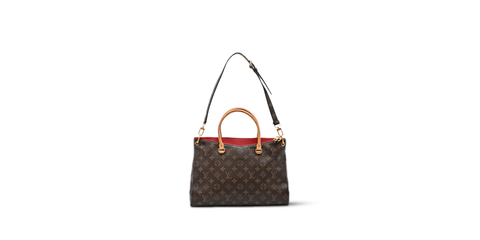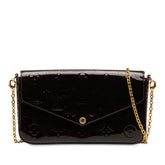أزياء فاخرة مستعملة: اتجاهات التسوق المستدامة
في عصر يتزايد فيه الوعي البيئي، يُعيد المستهلكون تقييم عادات تسوقهم بشكل متزايد، ويبحثون عن خيارات أكثر استدامة. ومن بين الاتجاهات التي اكتسبت زخمًا كبيرًا في السنوات الأخيرة سوق الأزياء الفاخرة المستعملة . لا يتيح هذا التوجه للتسوق المستدام لعشاق الموضة الاستمتاع بالأزياء الراقية فحسب، بل يُسهم أيضًا في بناء مستقبل أكثر مراعاةً للبيئة. في هذه المدونة، سنتعمق في عالم الأزياء الفاخرة المستعملة، ونستكشف تأثيرها على الاستدامة، ونقدم نصائح حول كيفية تحقيق أقصى استفادة من هذا التوجه.
صعود موضة الأزياء الفاخرة المستعملة

سوق الأزياء الفاخرة المستعملة قطاع مزدهر يتيح للأفراد شراء وبيع الملابس والحقائب والإكسسوارات المصممة مسبقًا، بما في ذلك القطع المرغوبة مثل إطار برادا الخفيف . وقد اكتسب هذا التوجه شعبيةً لعدة أسباب:
- الأزياء المستدامة : مع تزايد وعي المستهلكين بالبيئة، تتزايد الرغبة في تقليل البصمة البيئية لملابسهم. يُعدّ شراء الأزياء الفاخرة المستعملة بديلاً صديقًا للبيئة للأزياء السريعة.
- رفاهية بأسعار معقولة: يتيح شراء المنتجات الفاخرة المستعملة لعشاق الموضة اقتناء قطع فاخرة، مثل قماش Ultra Matte Woven الرائع ، بسعر زهيد. إنها طريقة سهلة للاستمتاع بماركات فاخرة مع الاستمتاع بأناقة هذا المنتج المميز.
- اكتشافات فريدة: تقدم متاجر الأزياء المستعملة مجموعة كبيرة من العناصر النادرة والقديمة التي يمكن أن تميز أسلوبك عن الأسلوب السائد.
الفوائد المستدامة للأزياء الفاخرة المستعملة

- يُقلل النفايات: تشتهر صناعة الأزياء بإنتاج كميات هائلة من النفايات. عند شراء سلع فاخرة مستعملة، مثل حقيبة لويس فويتون بالاس، تُساهم في تقليل الطلب على المنتجات الجديدة وتُجنّب رمي قطع الأزياء في مكبات النفايات.
- بصمة كربونية أقل: غالبًا ما يتطلب إنتاج الملابس الجديدة نقلًا مكثفًا واستهلاكًا للطاقة، فضلًا عن تصنيع حقائب جديدة لهذه القطع. باختيارك ملابس فاخرة مستعملة، فإنك لا تقلل فقط من البصمة الكربونية المرتبطة بإنتاج الملابس، بل تُخفف أيضًا من الأثر البيئي لتصنيع الحقائب.
- الحفاظ على الموارد : بإطالة عمر الملابس الحالية والحقائب المستخدمة لحملها، يمكنك تقليل الحاجة إلى المواد الخام والمياه والطاقة اللازمة لإنتاج ملابس جديدة بشكل كبير. يساعد هذا النهج المزدوج للحفاظ على الموارد على تقليل التأثير البيئي لخزانة ملابسك وخياراتك من الإكسسوارات.
- تشجيع العلامات التجارية على تبني ممارسات مستدامة: مع قيام المزيد من المستهلكين باختيار خيارات مستعملة، يتم تحفيز العلامات التجارية الفاخرة على تبني ممارسات أكثر استدامة للحفاظ على حصتها في السوق.
نصائح للتسوق المستدام للسلع الفاخرة المستعملة

- تأكد من أصالة المنتجات التي تشتريها: تأكد من أصالة المنتجات، خاصةً عند شراء منتجات فاخرة مثل Monogram Multicolore Lodge . ابحث عن أسواق إلكترونية موثوقة أو تفضل بزيارة متاجر السلع المستعملة ذات السمعة الطيبة.
- فحص الجودة: افحص المنتجات بعناية بحثًا عن علامات التلف أو التعديل.
- اعرف مقاسك: افهم قياساتك ومقاسات العلامة التجارية التي تهتم بها، حيث أن العناصر المستعملة قد لا يكون لها دائمًا مقاسات موحدة.
- ابق مطلعًا: تابع مدونات الموضة أو المنتديات أو حسابات وسائل التواصل الاجتماعي المخصصة للأزياء الفاخرة المستعملة للبقاء على اطلاع بأحدث الاتجاهات والعلامات التجارية والنصائح الداخلية.
- العناية بمشترياتك: بمجرد امتلاكك لعناصر فاخرة مستعملة، اعتني بها جيدًا لضمان طول عمرها.
خاتمة
الأزياء الفاخرة المستعملة ليست مجرد موضة؛ إنها خيار مستدام لأسلوب حياة. باتباع هذا النهج الصديق للبيئة في التسوق، تساهم في تقليل النفايات، والحفاظ على الموارد، وتشجيع التغيير الإيجابي في صناعة الأزياء. لذا، في المرة القادمة التي ترغب فيها في إضافة لمسة فاخرة إلى خزانة ملابسك، فكّر في تجربة سوق الملابس المستعملة. لن تحصل فقط على قطع فريدة، بل ستساهم أيضًا في تحول عالم الموضة نحو مستقبل أكثر استدامة.





